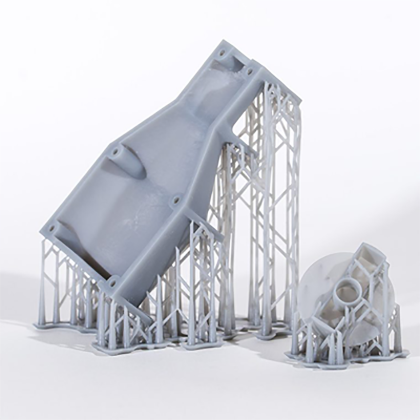The Benefits of SLA 3D Printing in Various Industries
Body
SLA 3D printing, also known as stereolithography, is a revolutionary technology that has transformed the manufacturing landscape across various industries. This additive manufacturing process offers a wide array of benefits that have made it a game-changer in the production of prototypes, parts, and products. Let's delve into the advantages of SLA 3D printing and its impact on different sectors.

Enhanced Design Flexibility
One of the key advantages of SLA 3D printing is its ability to provide unparalleled design flexibility. Traditional manufacturing methods often come with limitations in terms of complex geometries and intricate designs. However, SLA 3D printing allows for the creation of intricate and detailed structures that were once deemed impossible. This level of design freedom enables industries to innovate and develop products that were previously unattainable, leading to groundbreaking advancements in various sectors.
Cost-Effective Prototyping
SLA 3D printing offers a cost-effective solution for rapid prototyping. In the past, prototyping was a time-consuming and expensive process, often involving extensive tooling and machining. With SLA 3D printing, companies can quickly and affordably produce prototypes, allowing for iterative design improvements and accelerated product development cycles. This benefit has significantly reduced the time-to-market for new products, giving businesses a competitive edge in their respective industries.
Customization and Personalization
Another significant benefit of SLA 3D printing is its ability to facilitate customization and personalization. Industries such as healthcare, automotive, and consumer goods have leveraged this technology to create tailor-made products that meet specific customer needs. Whether it's custom medical implants, personalized automotive parts, or unique consumer products, SLA 3D printing has enabled the mass production of individualized items, revolutionizing the way industries cater to their customers.
Material Versatility and Performance
SLA 3D printing supports a wide range of materials, including photopolymer resins that offer various mechanical properties, from rigid to flexible. This versatility in material selection allows industries to produce parts and products with specific performance requirements. Whether it's producing durable components for aerospace applications or creating functional prototypes for engineering evaluations, SLA 3D printing provides the material flexibility needed to meet industry standards and regulations.
In conclusion, the benefits of SLA 3D printing have had a profound impact on various industries, from aerospace and automotive to healthcare and consumer goods. The technology's design flexibility, cost-effective prototyping, customization capabilities, and material versatility have propelled innovation and efficiency across the manufacturing landscape. As SLA 3D printing continues to advance, its influence on industries worldwide is set to grow, shaping the future of production and product development.










Comments